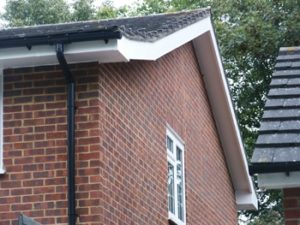
Fascia Board Repair
Add a review FollowOverview
-
Founded Date Settembre 27, 2021
-
Sectors Telecommunications
-
Posted Jobs 0
-
Viewed 62
Company Description
What Is The Reason? Soffit Installation Is Fast Becoming The Hottest Trend Of 2024
Fascia and Soffit Installation: A Complete Guide
Setting up fascia and soffit can significantly boost the looks of a home while supplying crucial defense versus the elements. By serving as shielded barriers at the eaves and edges of the roofline, they avoid water damage, pest invasions, and the deterioration of underlying structural elements. This short article explores the value of fascia and soffit, describes their installation procedure, and highlights bottom lines to guarantee an effective task.
Comprehending Fascia and Soffit
Fascia describes the horizontal boards set up at the rafter ends, forming the roofing system’s edge. Usually made from materials such as wood, vinyl, or aluminum, fascia supports the seamless gutters and aids with correct roofing system drain. On the other hand, soffit is the material that covers the underside of the eave, offering ventilation and security from the aspects while adding to the home’s total curb appeal.
Secret Functions of Fascia and Soffit:
- Protection: Prevents water infiltration and damage.
- Ventilation: Allows airflow to attic spaces, reducing heat buildup.
- Aesthetics: Defines the roofline and boosts the home’s appearance.
- Support: Serves as a structural part for seamless gutters.
Products for Fascia and Soffit
Choosing the ideal products for fascia and soffit is vital for sturdiness and performance. Here are common products used in their installation:
| Material | Advantages | Drawbacks |
|---|---|---|
| Wood | Versatile, aesthetically pleasing | Prone to rot, requires maintenance |
| Vinyl | Low maintenance, resistant to fading | Can crack in extreme temperatures |
| Aluminum | Long lasting, weather-resistant | Can dent easily, more costly |
| Composite | Lightweight, mimics wood aesthetics | Normally more expensive |
Installation Process
Setting up fascia and soffit involves a series of actions that demand careful planning and execution. Below is a detailed guide to the installation process:
Tools and Materials List
-
Tools:

- Measuring tape
- Circular saw or miter saw
- Hammer or nail weapon
- Level
- Ladder
- Safety goggles
- Caulking gun
- Trowel
-
Materials:
- Fascia boards
- Soffit panels
- Flashing
- Nails or screws
- Primer and paint (if using wood)
- Ventilation accessories (if required)
Step-by-Step Installation:
-
Preparation:
- Inspect the roofline for signs of damage or decay; replace any broken roofing products.
- Procedure the length of the fascia boards needed based upon the roofline dimensions.
-
Get Rid Of Old Fascia and Soffit (if appropriate):
- Carefully eliminate existing fascia and soffit, ensuring not to damage surrounding structures.
-
Install Fascia:
- Cut the fascia boards to size.
- Using nails or screws, secure the fascia boards along the rafter ends, guaranteeing they are level and appropriately aligned.
- Apply a sealant between the fascia board and the roof deck for waterproofing.
-
Install Soffit:
- Determine whether to use ventilated or closed soffit panels.
- Cut the soffit panels to size and protect them in location. Make sure enough gaps for ventilation if using ventilated panels.
-
Completing Touches:
- Install flashing to avoid water invasion at joints.
- Caulk and paint (if required) to match the home’s exterior and make sure a finished appearance.
-
Final Inspection:

- Once finished, check the installation for evenness, security, and proper alignment.
FAQs About Fascia and Soffit Installation
Q1: How typically should fascia and soffit be replaced?A1: The replacement frequency mostly depends on the product used, where wood generally lasts 10-15 years, while aluminum and vinyl can last substantially longer with correct maintenance.
Q2: Can I install Fascia And Soffit Installation and soffit on my own?A2: Yes, if you are comfy working at heights and geared up with the right tools, you can install fascia and soffit by yourself. However, employing a professional makes sure security and quality.
Q3: What type of ventilation is best for soffits?A3: Continuous soffit ventilation provides reliable air flow, promoting correct attic ventilation and decreasing moisture buildup.
Q4: How do I prevent insects from nesting in my soffits?A4: Installing screens and routine examinations can assist make sure no gaps are present where bugs can enter.
Q5: Are there any maintenance tips for fascia and soffit?A5: Regular inspections for damage, cleaning up rain gutters to avoid water overflow, and repainting wood fascia can extend the materials’ life.
Fascia and soffit play an essential role in any roofing system, serving both functional and visual purposes. By comprehending the materials readily available, following a thorough installation procedure, and knowing what maintenance is needed, property owners can significantly enhance their property’s look and durability. Whether undertaking the job as a DIY or deciding to work with a professional, guarantee quality products and techniques are utilized for the very best outcomes.


